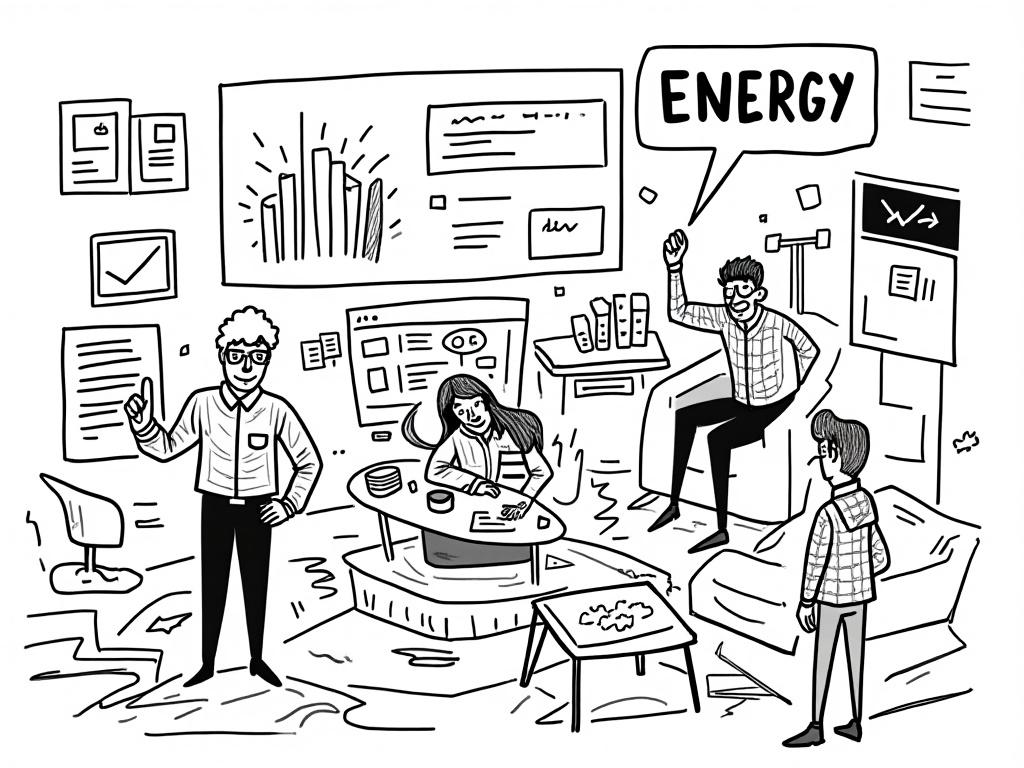
Greece’s Energy Revolution: From Crisis to Clean Power Leadership
Reading time: 8 minutes
Ever wondered how a country facing economic turmoil transformed into a renewable energy powerhouse? Greece’s energy sector tells a remarkable story of resilience, innovation, and strategic transformation that’s reshaping the Mediterranean energy landscape.
Table of Contents
- Current Energy Landscape in Greece
- The Renewable Energy Revolution
- Solar and Wind: The New Greek Champions
- Investment Opportunities and Market Dynamics
- Overcoming Key Energy Challenges
- Your Energy Future Roadmap
Current Energy Landscape in Greece
Greece’s energy sector has undergone dramatic changes since 2010. What started as necessity during the financial crisis has evolved into strategic opportunity. Today, renewable energy accounts for over 50% of Greece’s electricity generation, a figure that seemed impossible just a decade ago.
The transformation wasn’t accidental. Greece leveraged its natural advantages—abundant sunshine averaging 300 days per year and strong Aegean winds—to build energy independence while attracting billions in foreign investment.
Energy Mix Breakdown: The Numbers That Matter
Greece’s Energy Generation Sources (2023)
This shift represents more than statistics—it’s economic strategy. Greece reduced energy imports by €2.8 billion in 2023 alone, money that now stays within the domestic economy, supporting local jobs and infrastructure development.
The Renewable Energy Revolution
Here’s the straight talk: Greece’s renewable success isn’t just about environmental responsibility—it’s about economic survival turned into competitive advantage.
The Catalyst Moments
Quick Scenario: Imagine Greece in 2012. Energy costs were crushing household budgets, imports drained foreign currency reserves, and unemployment hit 27%. What would you do? Greek policymakers made a bold bet on renewables, and it paid off spectacularly.
The turning point came with three strategic decisions:
- Aggressive feed-in tariffs that guaranteed returns for renewable investors
- Streamlined permitting processes reducing project approval times from 5 years to 18 months
- Grid modernization investments totaling €1.2 billion to handle variable renewable sources
Real Success Stories
Case Study 1: The Kozani Solar Park
In 2019, this 204 MW installation in northern Greece became Europe’s largest solar project at the time. Built on former mining land, it now powers 75,000 homes and created 300 permanent jobs in a region devastated by coal mine closures.
Case Study 2: Aegean Wind Farms
The islands of Evia and Crete transformed from energy importers to exporters through strategic wind installations. Evia’s wind farms now generate enough electricity to power Athens for three months annually.
Solar and Wind: The New Greek Champions
Greece’s renewable success story centers on two technologies perfectly suited to its geography: solar photovoltaics and wind power.
Solar Power: Harnessing Mediterranean Advantage
With 2,500+ hours of sunshine annually—compared to Germany’s 1,600 hours—Greece possesses natural solar advantages that translate directly into economic benefits. Solar installations have grown from 7 MW in 2009 to over 4,500 MW today.
| Region | Solar Capacity (MW) | Annual Generation (GWh) | Households Powered | Investment (€M) |
|---|---|---|---|---|
| Attica | 850 | 1,275 | 315,000 | 680 |
| Thessaly | 920 | 1,380 | 345,000 | 735 |
| Peloponnese | 645 | 968 | 242,000 | 516 |
| Central Greece | 780 | 1,170 | 292,500 | 624 |
| Crete | 425 | 638 | 159,500 | 340 |
Wind Power: Capturing Aegean Energy
The Aegean Sea’s consistent winds create ideal conditions for wind generation. Greece now ranks 7th in Europe for wind power capacity, with installations generating enough electricity to power 2.2 million homes annually.
Pro Tip: The right wind farm location isn’t just about wind speed—it’s about grid connectivity, environmental impact, and community acceptance. Greek developers learned this lesson early, leading to some of Europe’s most successful wind projects.
Investment Opportunities and Market Dynamics
Ready to understand why international investors are flocking to Greek energy projects? The numbers tell a compelling story.
Market Fundamentals
Greece offers several investment advantages that smart money recognizes:
- Stable regulatory framework with guaranteed 20-year power purchase agreements
- EU funding support covering up to 40% of renewable project costs
- Grid parity achieved—renewables now cost less than conventional power
- Export potential to energy-hungry Balkans and Italy
The Peloponnese region has emerged as particularly attractive for renewable development, combining excellent solar and wind resources with strategic location. Many international investors are also exploring properties in peloponnese as part of broader energy sector investments.
Current Investment Flows
According to the Hellenic Association of Photovoltaic Companies, “Greece attracted €2.1 billion in renewable energy investments during 2023, making it the third-largest recipient of clean energy funding in Southeast Europe.”
Case Study 3: International Success
Norwegian energy giant Scatec invested €180 million in three Greek solar parks totaling 283 MW. The projects deliver 15% annual returns while supporting local employment in rural communities previously dependent on agriculture alone.
Overcoming Key Energy Challenges
Let’s address the elephant in the room: Greece’s energy transformation hasn’t been without obstacles. Here are the three biggest challenges and how they’re being solved.
Challenge 1: Grid Stability with Variable Renewables
The Problem: Solar and wind don’t generate power on demand, creating grid management complexities.
The Solution: Greece invested heavily in smart grid technology and battery storage. The Megalopolis Power Station now includes a 20 MW battery system that smooths renewable output fluctuations.
Challenge 2: Island Energy Independence
The Problem: Greece’s 227 inhabited islands traditionally relied on expensive diesel generators.
The Solution: The government launched the “GR-eco Islands” program, targeting energy independence for 26 islands by 2026. Tilos island achieved 100% renewable coverage in 2019, becoming a model for others.
Challenge 3: Lignite Transition
The Problem: Closing coal plants threatened thousands of jobs in mining regions.
The Solution: A €4.35 billion “Just Transition” program retrains coal workers for renewable energy jobs while attracting green industries to affected areas.
Your Energy Future Roadmap
Greece’s energy transformation offers valuable lessons for investors, policymakers, and energy professionals worldwide. Here’s your strategic roadmap based on Greek success factors:
Immediate Action Steps
- Assess natural resource advantages in your target markets—Greece succeeded by maximizing inherent strengths
- Prioritize grid modernization before massive renewable deployment to avoid integration problems
- Develop stakeholder buy-in through community benefit programs and transparent communication
- Leverage international funding mechanisms like EU Green Deal resources and climate finance
- Plan for economic co-benefits beyond energy generation, including job creation and export opportunities
Long-term Strategic Considerations
Greece’s experience demonstrates that energy transition requires patience and persistence. The country’s renewable journey took 15 years to reach current levels, but the economic and environmental benefits now compound annually.
As climate pressure intensifies globally, Greece’s model becomes increasingly relevant. The country proved that even nations facing severe economic constraints can lead in clean energy through smart policy design and strategic resource utilization.
Frequently Asked Questions
How quickly can other countries replicate Greece’s renewable success?
Implementation speed depends on existing infrastructure and policy frameworks. Countries with similar solar/wind resources could achieve 30-40% renewable penetration within 7-10 years with proper planning and investment. Greece’s streamlined permitting process, reducing approval times from 5 years to 18 months, was crucial for rapid deployment.
What are the main financial benefits of Greece’s energy transition?
Greece reduced energy import costs by €2.8 billion in 2023 while creating over 50,000 direct and indirect jobs in the renewable sector. Electricity prices for consumers dropped 15% compared to pre-transition levels, and the country now exports surplus renewable energy to neighboring markets, generating additional revenue streams.
Can Greece’s island electrification model work elsewhere?
Absolutely. The Greek island model combining solar, wind, and battery storage has been successfully adapted in the Caribbean, Pacific islands, and remote communities worldwide. The key is right-sizing systems to local demand and ensuring adequate storage capacity for periods without renewable generation.
What challenges will shape your energy strategy decisions in the coming decade? Greece’s transformation from energy importer to renewable leader demonstrates that with the right approach, even the most daunting energy challenges become opportunities for sustainable prosperity.

Article reviewed by Arthur Pembridge, Agricultural Land Investor | Sustainable Farming & Timberland, on June 4, 2025




